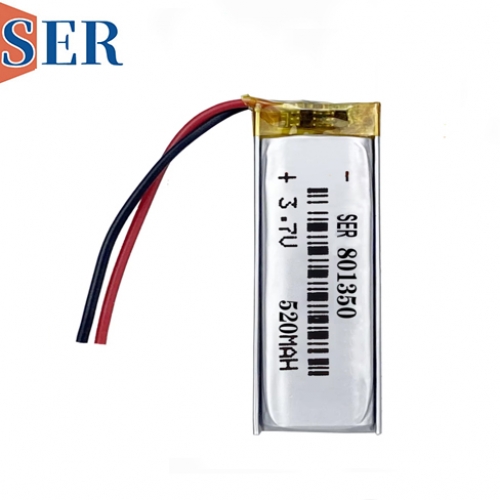Types of High-Temperature Batteries and Their Temperature Tolerance Ranges
Types of High-Temperature Batteries and Their Temperature Tolerance Ranges

1. High-Temperature Lithium-Ion Nickel Cobalt Manganese (NCM) Batteries
In general, lithium-ion batteries are not particularly sensitive to temperatures within the range of 0-40°C. However, once the temperature exceeds this range, their lifespan and capacity will be compromised. The optimal operating temperature for lithium-ion batteries is typically 0-40°C. When NCM batteries operate at temperatures above 50°C and below 60°C, their degradation accelerates, leading to a reduction in lifespan. Some batteries designed for special environments can even function normally at temperatures exceeding 100°C, with thermal peaks reaching up to 350-500°C.
The chemical properties of lithium metal become highly active when exposed to heat. The heat tolerance of lithium-ion batteries is generally around 200°C, and when this temperature is reached, the chemical reactions within the NCM material intensify, causing the electrolyte to ignite rapidly under high temperatures.
2. High-Temperature Polymer Lithium-Ion Batteries
Polymer lithium-ion batteries generally operate within a temperature range of -20°C to 70°C. Excessive temperatures can affect their capacity, reducing discharge capacity. Additionally, the chemical structure of the battery's internal materials may deteriorate, significantly impacting its lifespan.
High-temperature polymer lithium-ion batteries can withstand temperatures up to 800°C in certain tests. However, in daily life, such extreme temperatures are rarely encountered. Instead, we often see battery damage due to overcharging or excessive use of electronic devices. Smart devices, in particular, often employ curved batteries that undergo rigorous safety testing, including exposure to temperatures exceeding 50°C during the bending and formation process. High-temperature lithium-ion batteries typically undergo 300-500 charge-discharge cycles. It is recommended to partially discharge these batteries rather than fully discharging them, and to avoid frequent full discharges. Once a lithium-ion battery leaves the production line, its lifespan is typically limited to two to three years, regardless of usage.
3. High-Temperature Lithium Iron Phosphate (LFP) Batteries
High-Temperature LFP battery packs are typically categorized into five levels based on their operating temperatures: 100°C, 125°C, 150°C, 175°C, and above 200°C. Currently, the most commonly used electrochemical systems for high-temperature primary batteries are lithium/thionyl chloride and lithium/sulfuryl chloride, due to their high energy density, wide operating temperature range, long storage life, and high operating voltage.
Temperature Tolerance Ranges of High-Temperature Batteries
Among all electrochemical systems, the lithium/thionyl chloride and lithium/sulfuryl chloride systems exhibit the longest storage life and highest operating voltage, with varying requirements for ambient temperature.
A. For batteries operating at 150°C and 175°C, special design considerations are necessary.
B. Batteries operating at temperatures up to 100°C do not require special design and can be adapted from commercially available lithium-ion batteries with minor modifications.
C. Batteries operating at temperatures up to 125°C can be produced by making appropriate adjustments and controls during conventional battery manufacturing processes.
D. For batteries operating at 180°C and above, including 200°C, lithium alloys must be used as the negative electrode material, as the melting point of lithium metal (180.5°C) is too low for this application.
4. High-Temperature Lithium Thionyl Chloride (Li-SOCl₂) Batteries
High-temperature lithium thionyl chloride batteries are non-rechargeable lithium batteries capable of stable operation in high-temperature environments. Their positive electrode material is typically lithium thionyl chloride (Li-SOCl₂), hence their alternative name. These batteries offer advantages such as high energy density, stable operating voltage, long storage life, and low self-discharge rate, making them ideal for applications requiring high energy density and long lifespan, including IoT devices, utility meters, oil exploration, and medical equipment.
Key Features:
· High-Temperature Resistance: Li-SOCl₂ batteries can operate normally at elevated temperatures, with some models maintaining stable performance even at 150°C.
· High Energy Density: Provides extended usage time.
· Stable Operating Voltage: Ensures stable operation of equipment.
· Long Storage Life: Retains charge for extended periods even when not in use.
The low self-discharge rate of lithium thionyl chloride batteries helps extend their service life.
II. Application Areas
IoT devices:
Due to their long life and high energy density, lithium thionyl chloride batteries are widely used in IoT devices such as sensors and PLC programmers.
Water, electricity, and gas meters: These devices typically require long-term stable operation, and the high energy density and long life of lithium thionyl chloride batteries meet these requirements.
Oil exploration:
During oil exploration, equipment needs to operate in high-temperature and harsh environments, and lithium thionyl chloride batteries can handle these challenges.
Medical equipment:
Medical equipment has extremely high requirements for battery reliability and stability, and lithium thionyl chloride batteries can meet these requirements, ensuring the normal operation of medical equipment.





